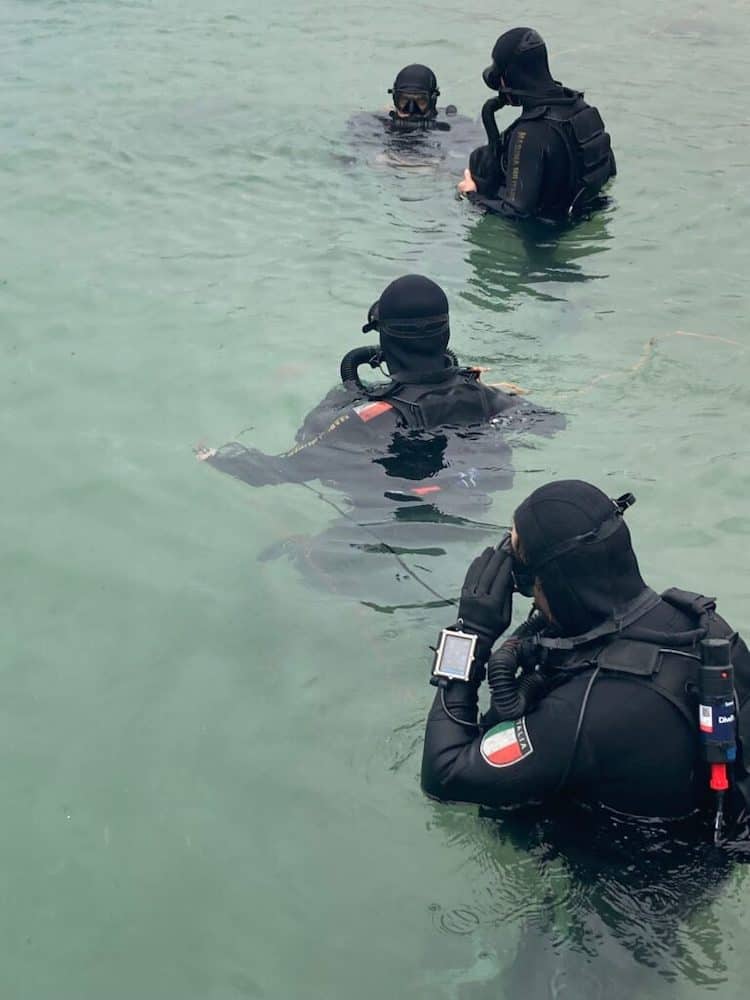In this article from Forcys, retired Royal Navy Cdr Justin Hains MBE illustrates how divers can enhance their current operations through the intelligent use of underwater communications and tracking products from Sonardyne.
Enhanced Situational Awareness
DiveTrack from our technology partner Sonardyne shows the supervisor where the divers are by range, bearing and depth. This positional information can be georeferenced by GPS and displayed on a chart layer. The supervisor can also be provided near real-time cylinder pressures, equipment alarms or alerts. Future features will include gas analysis of the breathing loop (PPO2 or CO2 content for example) and biometric data. Better information supports better decision making.
The diver’s positions are constantly updated. This has two operational advantages: first, the divers know where they are with a high degree of accuracy without the need to surface – they remain covert. Second, the divers arrive on target having spent the minimum time in the water, in better shape for the assault or recce. Covert beach surveys can be completed accurately without the need for a floating GPS antenna attached to the diver or constantly resurfacing to ensure the snag-line survey is correctly positioned – no easy task in current and swell.
The supervisor can also see when a diver is using gas at an unexpectedly high rate that endangers the mission. They can see if a diver is ascending or worse descending unexpectedly: a significant danger on enriched oxygen equipment. Because the supervisor can implement changes to the plan based on enhanced situational awareness the mission is more likely to succeed. If the team can react to unforeseen events efficiently, rather than working through pre-planned responses without any more detail, the team is one step closer to the ‘hyper-enabled operators’ envisaged by United States Special Operations Command.
The result of improved situational awareness is more efficient insertion and extraction and greater confidence in the accuracy of any data collected.
Tactical Flexibility
 “No plan stands first contact with the enemy” – or, in my experience, salt water. A covert dive to an offshore installation or a long-range insertion for beach reconnaissance both suffer from the same problem: there is no way of recalling the divers covertly without increased risk of detection on the surface. DiveTrack provides reliable through water communication via a selection of pre-formatted messages between supervisor and divers. In extremis, this could be an “abort mission” sent to all divers followed by a “return home” command which triggers a display of bearing and range information on the Shearwater Petrel dive computers and optional head up displays that will home them back to the dive boat, even as it moves.
“No plan stands first contact with the enemy” – or, in my experience, salt water. A covert dive to an offshore installation or a long-range insertion for beach reconnaissance both suffer from the same problem: there is no way of recalling the divers covertly without increased risk of detection on the surface. DiveTrack provides reliable through water communication via a selection of pre-formatted messages between supervisor and divers. In extremis, this could be an “abort mission” sent to all divers followed by a “return home” command which triggers a display of bearing and range information on the Shearwater Petrel dive computers and optional head up displays that will home them back to the dive boat, even as it moves.
But aborting the dive is the last resort. Far better is managing the mission dynamically. If the boat must move due to an enemy patrol, the beach recce team can be informed instantly. A “go to [new] waypoint” command can be sent by the supervisor at any time.
The system combines the accuracy of GPS with proven underwater acoustic ranging technology. But DiveTrack can still function in a GPS-denied battlespace. While the errors in navigation will increase over time, the relative positions of the dive boat and divers will remain accurate, and communications are unaffected. The mission can still proceed, reverting partially to previously used methods of visual sightings, but the benefits highlighted: enhanced situational awareness and tactical flexibility remain.








